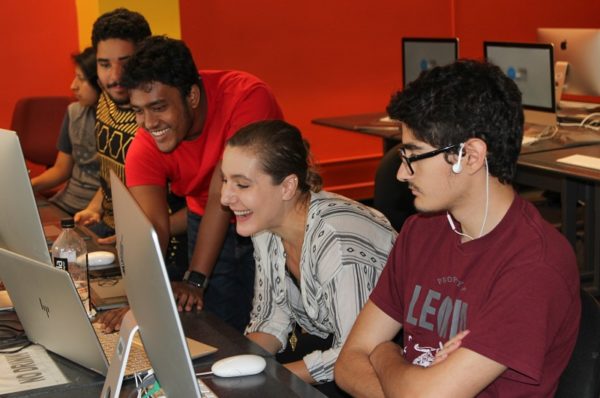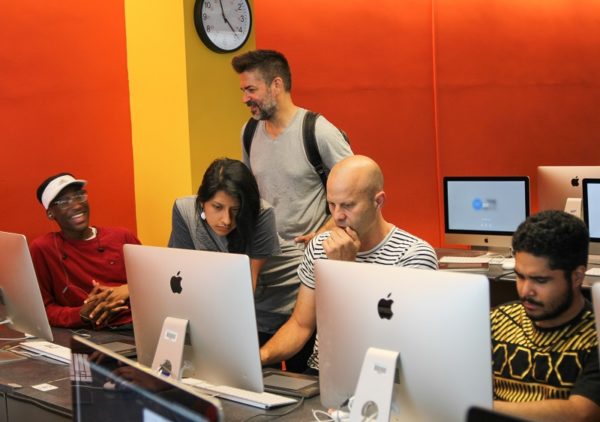
Near the start of a storyboarding course for at-risk high school students this summer, Associate Professor Dan Shefelman asked the 15 students to think of a simple dramatic incident from their lives: forgetting their Metrocard or an argument on the basketball court, perhaps. Throughout the two-week program, they fictionalized these anecdotes and drew storyboards to map out the backbone of a potential short animated film. The resulting stories, which they presented to their classmates, were sometimes funny and sometimes poignant—and the students came away with an important skill for any professional animator.
“I was impressed with how they pulled it together,” Shefelman says. “The stories had a coherent emotional theme, and they got laughs from the audience.”
This program, organized by nonprofit The Animation Project (TAP) and FIT’s Center for Continuing and Professional Studies (CCPS), was part of an effort by New York City Mayor Bill de Blasio to train a workforce for the city’s burgeoning animation industry. Traditionally, New York has lagged behind the West Coast in computer animation, but a recent tax break will likely spur more studios to open here—creating an estimated 10,000 jobs by 2024. The Mayor’s Office of Media and Entertainment has granted TAP $1.5 million to train 1,800 young New Yorkers this year.
TAP teaches animation and soft skills such as professional demeanor and effective communication to teenagers who have gone through probation. Introductory classes are led by an animator and a creative arts therapist, who helps students tell their stories, work peaceably in groups, and process the emotions that come up. The students in FIT’s class had studied with TAP for a number of months, even working as paid interns, so a therapist wasn’t needed. But what’s remarkable is that these teenagers, who were heading down a dangerous path, are now are on their way toward becoming professional animators.
“We’re reaching kids who are having trouble in school and who may not be thinking about college,” says Brian Austin, who founded TAP. “Ultimately, we want to give them the opportunites that everyone else has.”

Shefelman, who is on the boards of both TAP and the city’s new Animation Industry Council, brought the class to FIT and opened the door for further partnerships.
FIT has long offered a BFA in Animation, Interactive Media, and Game Design (formerly known as Computer Animation and Interactive Media), but in response to the growing need for animators, the college is adding more programming for this field. Illustration BFA students will be given more opportunities to study animation, and CCPS will be offering a precollege certificate program to run for 12 weeks this fall for TAP alumni who want to continue their studies. Participants will learn to use 3D modeling software at a professional level.
“When they’re done, they should be able to get a job or internship,” CCPS executive director Daniel Gerger says. “And getting people jobs is what we’re all about.”
